The four Spanish wineries among the 100 best in the world
Wednesday, August 31, 2022

Four Spanish wineries have just been recognized among the 100 best in the world by the experts of the prestigious North American magazine Wine&Spirits. In its Top 100 Wineries of 2022, wineries are chosen from different wine-growing regions around the world. From Spain, only Suertes del Marqués (from the Orotava Valley in Tenerife), Tempos Vega Sicilia (Ribera del Duro), Viñedos Sierra Cantabria (Rioja) and Can Sumoi (Penedès) have been chosen.
The American publication, which has more than 35 years of history and is specialized in the wine sector, compiles the list of the 100 best based on the quality of the wines tasted during the year through a blind tasting procedure. In the classification of the best wineries in the world, there are also historical and renowned wineries such as Bollinger, Krug, Louis Jadot, Guigal, Sandrone, Ornellaia, Donhoff, Royal Tokaji and Graham's. With up to 18 wineries on the list, France heads the Top 100 Wineries of 2022 above Italy, with 14 representatives.
In this edition, thousands of producers have been blind-tasted again. Every year, Wine&Spirits produces a buying guide on the Top wines and wineries of the year (Annual Buying Guide-Fall 2022), published in its autumn issue. Those chosen are selected from thousands of winemakers by the tasting team that blindly examines and evaluates the possible candidates.
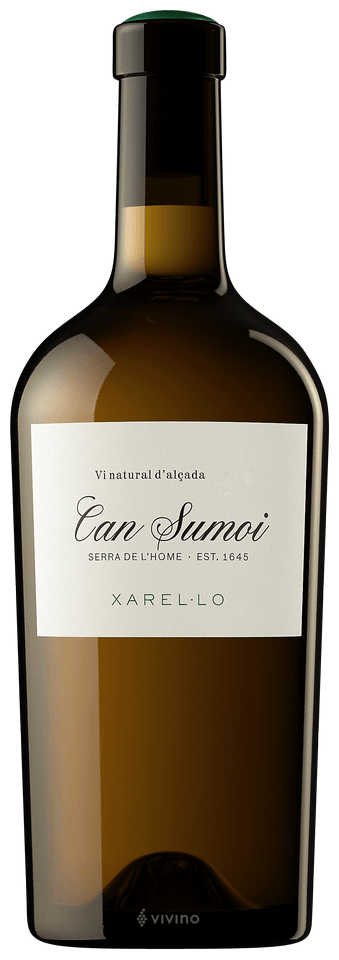
Can Sumoi, the wine cellar run by Pepe Raventós, has achieved this recognition in just 5 years of experience, despite the fact that the magazine had already scored its organic and biodynamic wines on several occasions. Can Sumoi, a project parallel to that of the Raventós i blanc sparkling wines from Sant Sadurní d'Anoia, was born in 2017, from Pepe Raventós' passion for ecological wines and "pursuing one of our main purposes: to recover varieties and vineyards lost in the heart of the Penedès”.
The family that owns Raventós i Blanc acquired this unique estate that had been abandoned to its fate for years, since 2000. They also collaborate with local winegrowers who work in certified organic farming.
Can Sumoi takes its name from an integrated estate in the Baix Penedès dating from 1645 in the Serra de l'Home, in Montmell, 600 meters above sea level, where they are recovering 20 hectares of vineyards with an average age of 50 years within the framework of a 400-hectare farm (300 of which are forest). Pepe Raventós adds that “we make wine and we do ecology; That is why we help protect this forest.” Theirs are organic and natural wines made with the least possible intervention (without oenological additives or sulfur) in all processes, both viticulture and vinification.
As good as it may be to have 4 in the top 100, I am amazed that there are only 4...I can only imagine that many vineyards were not represented in the tasting as I am more than confident that Spanish wines such as Muga or Pago de Carraovejas, Marques de Murrieta and many many more would have been up there at the top and leading the world in quality. In fact, you only need to see how poorly represented Spanish wine is abroad and it all starts to make sense. Unfortunately for some, and fortunately for the Spanish, most of its best wines stay in Spain.
 2
Like
Published at 6:37 PM Comments (0)
2
Like
Published at 6:37 PM Comments (0)
The Healthiest City in the World is in Spain
Wednesday, August 24, 2022
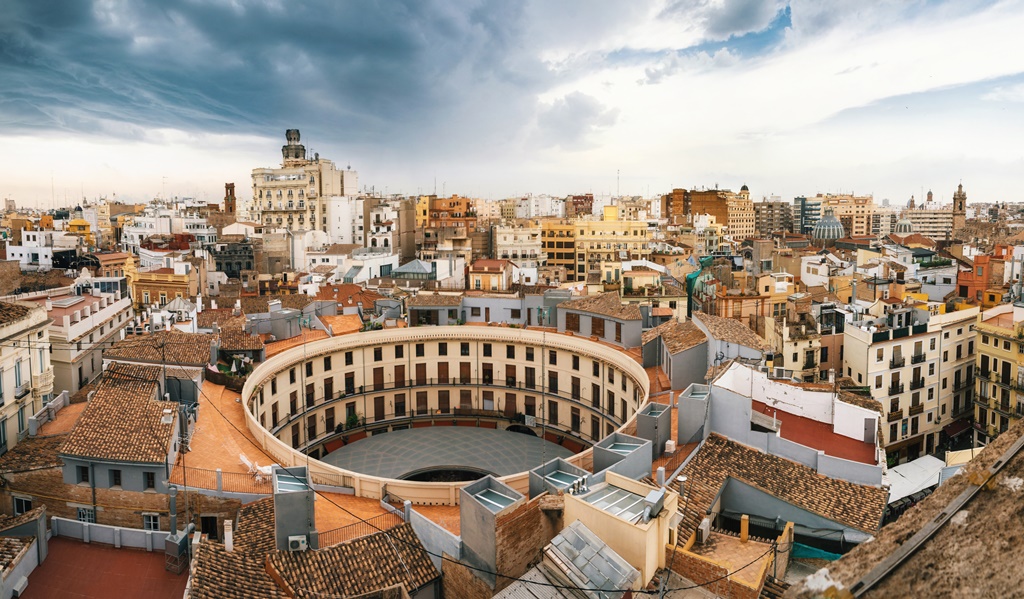
In Spain, each city has its particularities that make it different from the rest and the inhabitants lead different lives adapted to what the city can offer. Although there are beautiful monuments and locations in Spain, now after the results of a study carried out by the financial products consultant Money.co.uk Spain can boast that two of its cities are among the healthiest in the world.
Some of the reasons are due to beaches which have crystal clear water and white sand. It also highlights the gastronomy that all travellers who visit Spain cannot resist, such as ham, traditional paella or croquettes.
One of the most important things when travelling is to be sure we are going to a place which is good for our health and safe. When the publication carried out the study, several factors were taken into account that can directly affect our health, such as air pollution, general safety, life expectancy or the number of hours of sunlight.
But they did not stop there, they also valued specific things such as green areas, lakes, rivers and even the temperature in the city. The results have revealed that Valencia and Madrid lead the ranking of the healthiest cities in the world. It is true that most of the cities that have managed to be in the ranking are European, although there are cities from other continents such as Asia or Oceania.
According to the publication, what stands out most about Valencia is its high life expectancy of 83.5 years, so the inhabitants have a long life to enjoy the city.
The healthiest cities in the world are:
1. Valencia, Spain
2. Madrid, Spain
3. Canberra, Australia
4. Lisbon, Portugal
5. Tokyo, Japan
6. Zurich, Switzerland
7. Vienna, Austria
8. Chiangmai, Thailand
9. Adelaide, Australia
10. Ljubljana, Slovenia
 2
Like
Published at 9:21 PM Comments (0)
2
Like
Published at 9:21 PM Comments (0)
Spanish Craft Beer
Friday, August 19, 2022
In Spain, however much they might like going out for a few beers, they're not known as a beer-drinking country. Change is in the air, however, and more and more Spaniards are scouting out quality and originality in their beer. It's becoming a normal thing to go to a beer tasting, and the words associated with beer are beginning to sound less and less foreign. Each province now has a microbrewery or two that make and market their own brews, organise classes and tastings with pairing suggestions, open their brewery doors to the public so they can get a closer look at how it's done, etc just as wineries have been doing for years, encouraging tourism similar to wine tourism, though it is still in its early stages.
The ingredients are simple: water, barley (which turns into malt after germination and the drying of the barley), hops and yeast. People have been brewing beer for centuries and it has been one of the world's biggest industries throughout history. Here are some of the most popular craft beers in Spain which are well worth tasting...
La Salve, Bilbao: A beer that is coming back strong
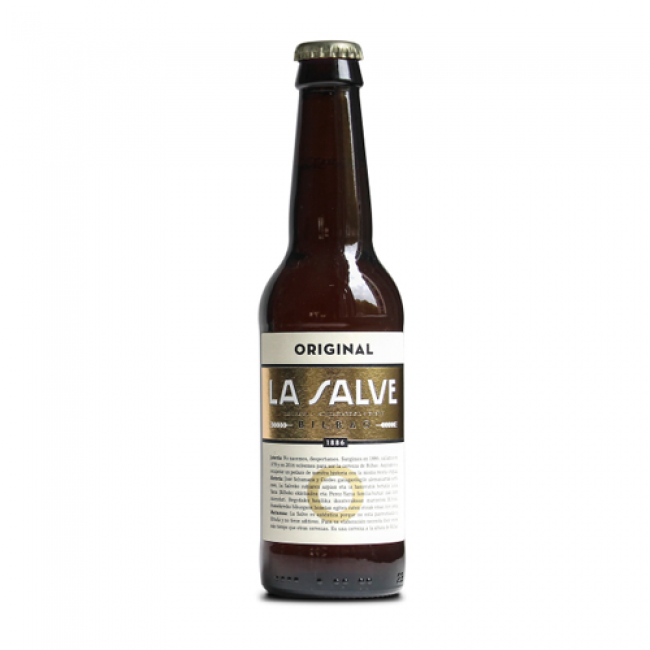
This isn't a new beer; the brewery was founded in 1886. After being closed for several decades, La Salve was reborn in 2014 with the aim of becoming the figurehead of Bilbao's beers. With the intention of creating cultural spaces in which to support new artists, its name comes from the site of its first brewery, underneath the La Salve bridge which is now directly connected to the Guggenheim Museum. It was the son of a German brewer who lived in the capital who set the ball in motion. They brew two types of beer: 33 cl and 50 cl golden and Munich ales, the perfect match for meat and cheese thanks to their caramel aroma and the hints of malt and clove.
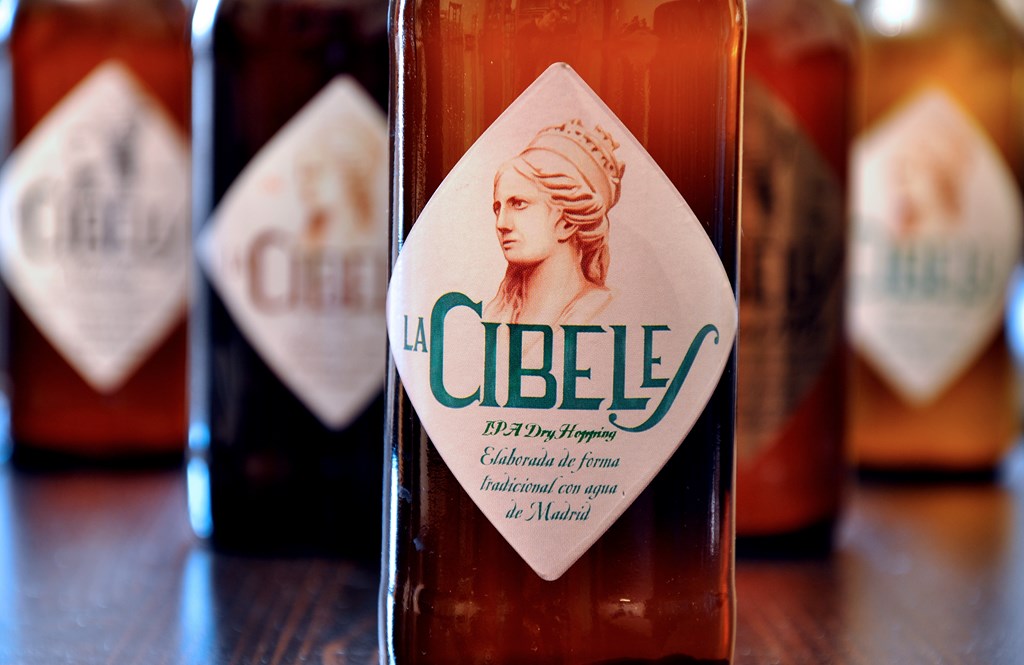 Cibeles, Madrid. Cibeles, Madrid.
Can't get any more Madrid than this. Cibeles, with 12 different kinds of beer, has only been on the market for four years and its microbrewery south of the city has become a gathering place for craft beer lovers. Besides brewing and bottling their beers, they also host activities at their facilities, ranging from tastings and classes on brewing to concerts. The space is also available to hire for company events or meetings. Their beers go from the classic pale ale, smooth and refreshing, to a stout with more body that releases aromas and flavours of coffee and chocolate.
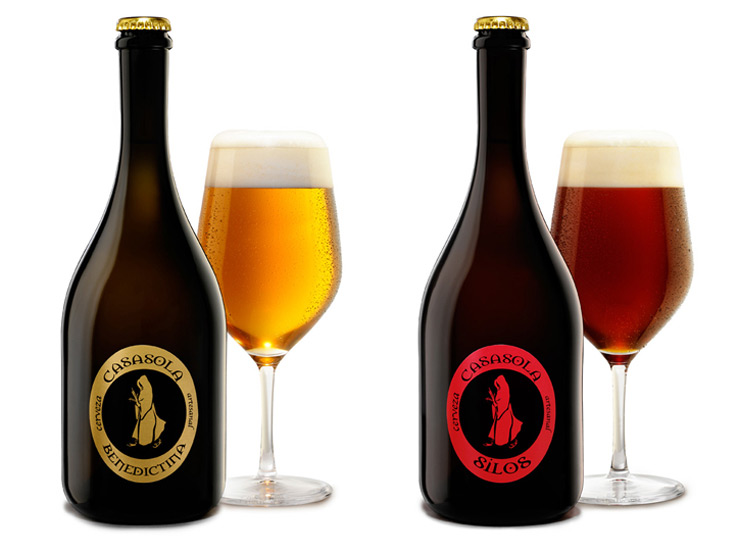 Cervecería Casasola, Valladolid. From the heart of the Esgueva Valley Cervecería Casasola, Valladolid. From the heart of the Esgueva Valley
They were pioneers in Castilla y León in microbrewing. The brewery is housed in what was once a monastery's dairy. They've captured the essence of the place in their brand and their logo which features a monk; a reference to the abbots, considered the best brewers of them all. In Casasola they bottle a large variety of beers in 75 cl bottles, giving them the opportunity to ferment for a second time in the bottle, strengthening the flavour. That's how they add hints of pepper, orange and even a final touch of coriander to their wheat beer.

Beer Cat, Barcelona. Craft beer born in a country villa
Beer Cat is a special case in several ways. It is Spanish brewing led by three English partners who decided one day to leave their homeland and embark on this project in Barcelona. Inside a typical Catalan masia, or country villa, they brew six types of beer and offer guided tours of the estate. Each one of its beers pairs perfectly with different dishes, like its Pa i Roses, a wheat beer, whose touches of lime and citric aromas perfectly bring out the flavours of fish dishes.
 1
Like
Published at 9:21 PM Comments (0)
1
Like
Published at 9:21 PM Comments (0)
Órgiva
Tuesday, August 9, 2022
The sky was the colour of a Manchester City football shirt and the almond blossom reminded me of those cotton wool balls women remove their make-up with (and blokes I suppose). Every hue of pinks and whites possible. The mountains of the Sierra Nevada had a blanket of snow on them which seemed to enhance all the colours around us.
What a stunning introduction to the Alpujarras! It was the middle of February and we were making our first visit to mainland Spain. Having left the doom and gloom of England behind, the temperature here was a pleasant sixteen degrees and the holiday was off to a good start. And that’s all it was, a holiday. Our accommodation for the week was a self-catering casita (a small house) on the Tijola road out of Órgiva in Andalucia.
On the way to our casita, we drove over some lemons and with some luck found our abode. What a beautiful place, nestled in a valley with views across the Rio Guadalfeo (ugly river) to the mountains of the Contraviesa and the hippy camp of Cigarones.
Once settled in, and with our six-year-old daughter, Alex looking expectantly at the swimming pool, we noticed our casita had nothing in stock. None of the basics like toilet paper, salt, pepper, olive oil (which could be purchased off the owners) washing-up liquid, beer etc.
Sarah exclaimed, “If we had letting houses, they would at least have a welcoming pack.”
Alarm bells should have started ringing!
Well, off we went into town to purchase all the necessary supplies. There were lots of bars and restaurants, mainly all with the same menu, supermarkets, five banks, no charity shops and no estate agents. Not that we were looking for estate agents, just curious.
You could spot us a mile away in our shorts and sandals, we were in holiday mode. While in the town we had a beer in Nemesis One. There must be a Nemesis Two somewhere? Every time we had a drink the landlord brought us a tasty morsel.
Ah, we thought, this must be tapas.
The Granada province is one of the last areas to serve tapas with beer, wine or mosto (non-alcoholic wine). Not with spirits or soft drinks though. The townspeople were well wrapped up, but to us, it was like an August day back in England.
It was not long before Alex was enjoying the pool. It was a little fresh and she tried in vain to coax us in. No chance, it’s February. Living in a rural area in England we thought we had fresh air but here we noticed how pure the air was and how well we slept. The shutters on the windows kept out the early morning light.
Our hosts were people we had known back in Somerset where they used to run the local pub. They had moved to Órgiva to be close to their granddaughter and had bought a ruin to convert into letting houses and what a great job they had done. The garden was well stocked with colourful plants, oranges and lemons providing bright orbs of sunshine and slices of fruit for our liquid refreshments.
During the holiday it was carnival time in Órgiva, normally eight weeks before Easter but the celebrations had to be spread over many weekends as only one marquee was available in the area for so many towns and villages. Friday night was the kids’ turn and we managed to get Alex dressed up as a clown. It was good to get involved and we could feel the warmth and friendliness of the local parents with children of a similar age. Saturday was for the adults.
Órgiva is the capital market town of the Alpujarras with a population of around five thousand people. It’s a bustling busy town with a very cosmopolitan, bohemian atmosphere. Mining and agriculture are its main activities but with tourism catching on. The ski resort of the Sierra Nevada is only an hour and a half away and the beaches of Motril and Salobrena just forty minutes down the road. At four hundred and fifty metres above sea level, the town has a micro-climate in which many different crops can grow, all fed from the waters of the melting snow off the mountains.
While settling into our holiday routine and thoroughly enjoying our surroundings a niggling question was emerging from somewhere in the back of my mind. What’s the price of property around here? And could we do what our hosts had achieved?
I needed to find an estate agent. These elusive characters operated in pairs, one foreign and one local. I was told they hung around a coffee bar called Galindos, and coffee time and breakfast time was at ten. So off I set to track them down.
My luck was in and I found a guy called Dharmo and his Spanish mate, Ramon (Dharmo’s corridor). Dharmo made the contacts with the foreigners and Ramon found the properties.
On introducing myself I was eyed with suspicion; they were in no hurry to show me their portfolio of property. Eventually, Dharmo pulled out of his well-worn satchel a photograph album with pictures of ruins of farmhouses, townhouses and bare parcels of land. But no prices.
Author: Andy Bailey
Bio: We moved to Spain 20 years ago and have been compiling a book by observing and integrating since we arrived. The book is now published. Órgiva: A Chancer's Guide to Rural Spain. Chris Stewart has given it a good review.
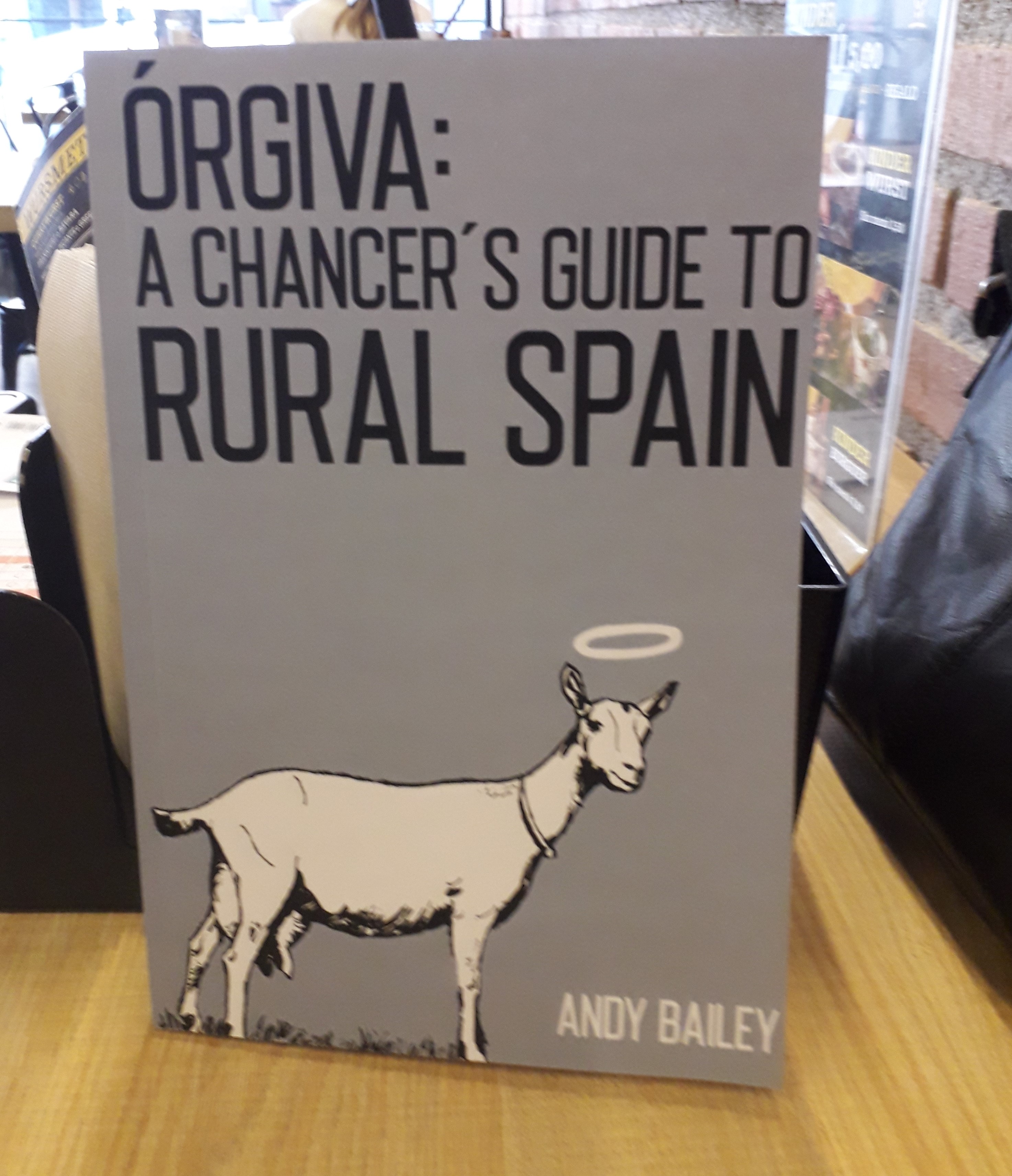
 1
Like
Published at 11:27 PM Comments (0)
1
Like
Published at 11:27 PM Comments (0)
Did you know Valencia has a Volcano?
Monday, August 8, 2022
The province of Valencia has a volcano. It is not active and it seems that it will not be for a while, but if you pass through Cofrentes area you can pay it a visit. It is located in Cerro de Agras, at about 500 meters above sea level and its last activity was about 2 million years ago.
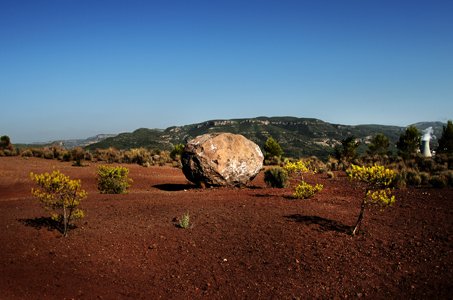
The Valencian Community is home to 2 of the 4 areas with volcanic activity in continental Spain. One of them is this area of Cofrentes; the other, the Columbretes Islands.
The Cerro de Agras volcano is a "sleeping" volcano. Classified as such due to the fact that it has not registered activity in the last 10,000 years. However, deep inside there is still enough activity to cause some natural springs where fantastic spas have been built nearby such as those at Balneario Hervideros.
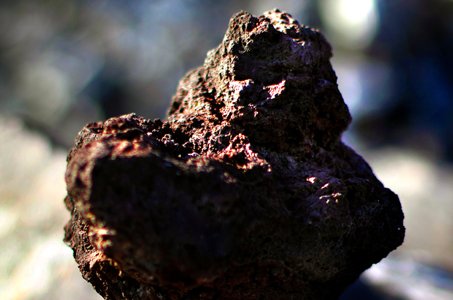
The process that causes this activity is the expulsion of CO2 (carbon dioxide) and CH4 (methanol), which travels from a magmatic chamber installed deep within the volcano to the Hervideros spring and generate bubbles.
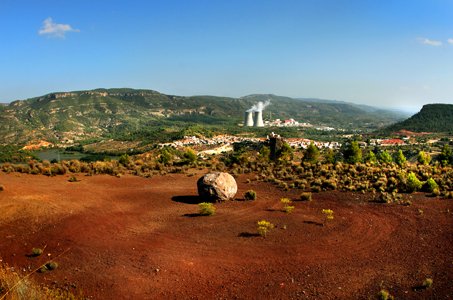
The volcano itself is located about 3 kilometres from the Cofrentes nuclear power plant, which is scheduled to close in 2030. Studies were carried on the possible impact of the volcano on the construction of the power plant, and they revealed that the last activity was about 2 million years ago. However, an eventual eruption is a possibility that can never be ruled out in geology. If you want to visit it, you will have to go to Cofrentes, taking the road towards Requena.
 1
Like
Published at 11:41 PM Comments (0)
1
Like
Published at 11:41 PM Comments (0)
Spam post or Abuse? Please let us know
|
|